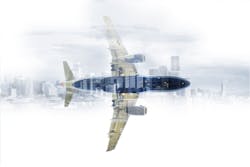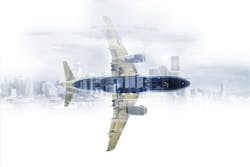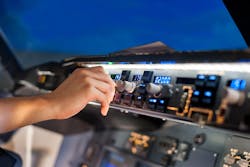Government agencies collaborate on aviation communications safety and security
WASHINGTON, 5 Feb. 2016. Federal Communications Commission (FCC) and U.S. Department of Transportation (DOT) officials are establishing a Federal Interagency Working Group to more effectively collaborate with other agencies on a variety of issues, including the safe and secure use of consumer communications onboard domestic commercial aircraft.
“This agreement builds on the productive, collaborative interagency coordination efforts in recent years as aviation communications safety and security concerns have emerged,” officials say.
The Working Group’s primary mission will be to harmonize policy and regulatory activities regarding safe and secure communications and aviation while maintaining the independent policy-making responsibilities of each agency.
The DOT’s Federal Aviation Administration (FAA) and the FCC will co-chair the Working Group, with the Public Safety and Homeland Security Bureau coordinating efforts within the FCC. In addition to FAA and FCC subject matter and regulatory experts, Federal Government representatives from law enforcement, intelligence, defense, and national and homeland security agencies will participate in the Working Group to identify, analyze, discuss, and make recommendations regarding steps that are needed to ensure the continued safe and secure use of consumer communications technology onboard domestic commercial aircraft.
The Working Group will also invite other relevant Federal Government entities to participate, as appropriate, and will keep these organizations informed of significant conclusions.
The Working Group will meet on a quarterly basis or at other times as circumstances dictate. It is anticipated that the topics discussed will be of significant interest to a number of agencies. Broad interagency participation will be encouraged and will help in the coordination of regulatory activities, where appropriate, with other Federal Government missions.
Members of industry, trade groups and associations, academia, outside subject matter experts, and representatives of state, local, tribal, and territorial governments may be invited by the Chairs to make presentations to the Working Group, but will not be members of the Working Group nor participate in policy discussions.
Aviation images courtesy Shutterstock.
You might also like:
Subscribe today to receive all the latest aerospace technology and engineering news, delivered directly to your e-mail inbox twice a week (Tuesdays and Thursdays). Sign upfor your free subscription to the Intelligent Inbox e-newsletter at http://www.intelligent-aerospace.com/subscribe.html.
Connect with Intelligent Aerospace on social media: Twitter (@IntelligentAero), LinkedIn,Google+, and Instagram.


